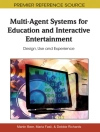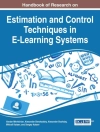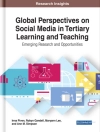Review, rethink, and redesign racial support systems NOW
As schools engage in courageous conversations about how racialization and racial positioning influences thinking, behaviors, and expectations, many educators still lack the resources to start this challenging and personally transformative work. Race Resilience offers guidance to educators who are ready to rethink, review, and redesign their support systems and foster the building blocks of resiliency for staff.
Readers will learn how to:
- Model ethical, professional, and social-emotional sensitivity
- Develop, advocate, and enact on a collective culture
- Maintain a continuously evaluative process for self and school wellness
- Engage meaningfully with students and their families
- Improve academic and behavioral outcomes
Race resilient educators work continuously to grow their awareness of how their racial identity impacts their practice. When educators feel they are cared for, have trusting relationships, and are autonomous, they are in a better position to teach and model resilience to their students.
Tabla de materias
Foreword by Nancy Boyd-Franklin, Ph D
Preface
Acknowledgments
About the Authors
Chapter 1. The Implementation Process: Steps to Becoming a Race Resilient School
Year 1: Planning to Become a Race Resilient School
No Need to Reinvent the Wheel
Years 2–4 and Continuous Improvement
Chapter 2. The NEED: Societal Changes Change Schools
Changes in the Workplace
Household, Community, and Environment: The Three Realms of Adverse Childhood Experiences
Chapter 3. Creating the Culture for Developing a Race Resilient Climate
School-to-Prison Pipeline
Blind Spots Impact Other Groups of Students
Measuring Up: Culture and Climate Are Not Synonymous
Locus of Control
Chapter 4. Educators’ Emotions Matter: Building Up Stamina for Developing a Race Resilient Climate
So How Do Educators Feel?
Our Daily Goal: Minimizing Distress and Maximizing Eustress
Our Hormonal Brain Under Distress and Eustress
Chapter 5. Racialization Can Be Blinding
Racial Positioning
United We Stand, Divided We Crawl
The “R” Word
2020 and America’s Racial Awakening
Through the Eyes of a Child: Racialization and Historical Trauma
Historical and Generational Trauma
Genes Load the Gun, Environment Pulls the Trigger
E Pluribus Hurt, E Pluribus Healing
This Is Us
Chapter 6. Race Has Mattered in the School House
The Effects of Racialization: White Identity Dispositions, Internalized Racism, and Stereotype Threat
White Identity Dispositions
Internalized Racism and Stereotype Threat
Chapter 7. Mindful of Race
Mindfulness in Teaching and Learning
The Weight Room Versus the Wait Room
Positive Psychology’s Five Building Blocks of Life
Chapter 8. Educator Resilience, Educator Race Resilience, and Mindfulness for Racial Equity
Transforming a District
Transforming a School
In the Space Between Is Mindfulness
Introduction to Space Between
Appendix
Appendix A. Processing for Racial Awareness and Creating a Race Resilient Action Plan
Appendix B. Race Resilient School Checklist
Glossary of Terms
References
Index
Sobre el autor
Justin Hendrickson is a longtime Seattle resident who is currently serving as a Pre K-8th grade public school principal. The zip code where his school is located is described as the city’s most ethnically diverse. Ninety percent are students of color. Sixty-five percent participate in the free or reduced lunch program and 21% are English Language Learners. Eight percent of the students are homeless. Justin brings almost 20 years of experience in urban education as a teacher and instructional coach. As a leader in a community-based school, he is focused on implementing a trauma informed school environment where staff practice culturally responsive pedagogy and use strategies that foster resiliency.












